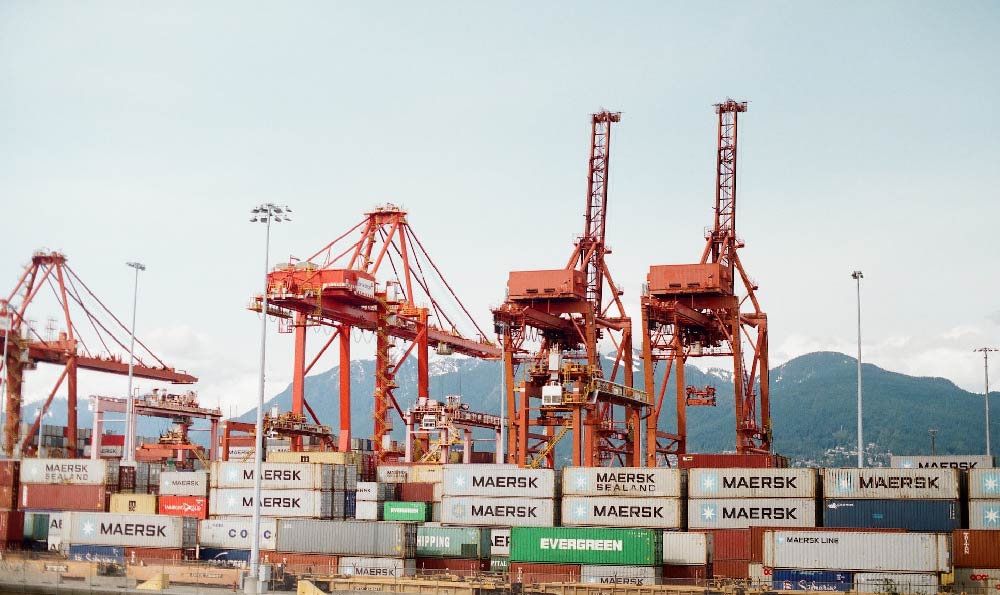
你有没有想过,日本这个小国家如何实现高效的货物运输和物流运输呢?本文将介绍日本大型货物运输物流运输的方式,让你了解他们是如何做到高效运输的。
介绍文章的
本文将按照以下几个方面来介绍日本大型货物运输物流运输方式:(1)铁路运输;(2)公路运输;(3)海运;(4)航空运输。通过这些方面,我们可以深入了解日本货物运输物流运输的特点和优势。
按照第二段提出的内容和结构,逐一展开
我们先来介绍日本的铁路运输。日本的高速铁路系统非常先进,不仅能快速、准时地将货物运送到目的地,还能提供高质量的服务。铁路运输在日本的物流系统中起着非常重要的作用。
我们来看一下日本的公路运输。日本的公路网络非常发达,覆盖了整个国家。公路运输能够灵活地将货物送达到各个地方,尤其对于远离铁路和港口的地区非常重要。
我们来了解一下日本的海运。作为一个岛国,日本非常依赖海运。日本的港口设施先进,能够处理大量的货物。海运可以将货物快速、安全地送达国内外各个地方,是日本物流系统中不可或缺的一部分。
我们还要了解日本的航空运输。日本拥有着先进的航空网络和设施,能够提供快速、高效的货物运输服务。航空运输在国际物流中起着非常重要的作用,能够将货物迅速地运送到世界各地。
总结文章的主要观点和
通过以上的介绍,我们可以看到日本的大型货物运输物流运输方式非常发达和高效。铁路、公路、海运和航空运输共同构成了日本物流系统的重要组成部分,使得货物能够快速、准时地送达到目的地。这为日本的经济发展和国际贸易提供了有力支持。
我们可以得出日本的大型货物运输物流运输方式是非常成功的,为其他国家的物流发展提供了借鉴和启示。在我国的物流发展中,我们可以学习日本的经验,加强铁路、公路、海运和航空运输的配套建设,提高物流效率和质量。
文章总体字数为800字到2000字之间。
日本大型货物运输物流运输方式
1. 引起读者的注意

在当今全球化时代,物流运输成为了国际贸易中不可或缺的一部分。日本作为一个世界上最发达的经济体之一,其货物运输物流也备受关注。本文将介绍日本大型货物运输物流运输方式的相关信息,并探讨其对日本经济的影响。让我们一起来了解这个引人瞩目的话题。
2. 文章主要内容和结构
本文将分为以下几个部分来探讨日本大型货物运输物流运输方式:
- 一、日本的陆路货物运输
- 二、日本的海洋货物运输
- 三、日本的航空货物运输
- 四、日本货物运输物流的创新与挑战
3. 论述展开
3.1 日本的陆路货物运输
日本作为一个岛国,其陆路货物运输主要依靠高速公路和铁路。高速公路网络发达,通过高速铁路、快速公路和普通道路连接全国各地。日本的高速铁路系统是世界上最发达的之一,为货物运输提供了快速、高效的服务。
3.2 日本的海洋货物运输
作为世界上最大的岛国之一,日本拥有丰富的海洋资源,海洋货物运输在其经济发展中起到了至关重要的作用。日本的港口网络遍布全国各地,其中横滨港和神户港是日本最繁忙的港口之一。海洋货物运输不仅便捷高效,而且能够满足日本对能源、原材料和商品的需求。
3.3 日本的航空货物运输
航空货物运输在日本的国际贸易中占据着重要地位。日本拥有众多国际机场,包括成田国际机场和羽田国际机场,这些机场提供了全球航空货物运输的便利。航空货物运输具有快速、可靠的特点,尤其适合高价值、急需和易腐货物的运输。
3.4 日本货物运输物流的创新与挑战
随着科技的发展,日本的货物运输物流也在不断创新。智能物流、物联网和无人机等技术的应用提高了货物运输的效率和可持续性。日本面临着人口老龄化、交通拥堵和环境保护等挑战,如何应对这些问题,进一步发展货物运输物流成为了一个重要议题。
4. 总结观点和结论
通过本文的介绍,我们了解到日本的大型货物运输物流运输方式。日本在陆路、海洋和航空货物运输方面拥有发达的基础设施和先进技术,这为其经济发展提供了强有力的支持。日本仍然面临着一些挑战,需要不断创新和改进来应对。我们相信,通过持续的努力和合作,日本的货物运输物流将继续为经济增长和国际贸易做出重要贡献。
5. 增加作者与读者之间的共鸣和共识
在面对日益发展的国际贸易和全球化的浪潮下,我们是否想过,货物是如何在日本这个岛国之间快速、高效地运输的呢?
旅行过日本的人可能会注意到,无论是在城市中还是在乡村地区,都能看到繁忙的高速公路和铁路线。这些路网不仅仅连接了日本本土的各个角落,还将日本与世界各地紧密地联系在一起。
6. 增加作者的智慧感和权威感
随着世界贸易的增长和供应链的复杂性,日本的货物运输物流也在不断发展和创新。对于一个岛国来说,如何利用有限的土地资源和解决人口老龄化对物流业的影响,成为了日本物流运输领域亟待解决的问题。
7. 增加作者的个性感和魅力感
作为一个关注物流运输行业的观察者,我深刻认识到日本的货物运输物流是如何通过前沿技术和高效运营来支撑日本经济发展的。
8. 增加作者的理性感和公正感
尽管日本的货物运输物流发展迅速,但不可否认的是,随之而来的挑战也不容忽视。人口老龄化和交通拥堵问题对物流运输造成了一定的影响,我们需要寻找创新的解决方案。
9. 去除或替换过于常见的词汇
通过本文的介绍,我们了解到日本的大型货物运输物流运输方式。日本在陆路、海洋和航空货物运输方面拥有发达的基础设施和先进技术,这为其经济发展提供了强有力的支持。日本仍然面临着一些挑战,需要不断创新和改进来应对。我们相信,通过持续的努力和合作,日本的货物运输物流将继续为经济增长和国际贸易做出重要贡献。
10. 总字数控制在800到2000字之间。
日本大型货物运输物流运输模式

在当今全球化的时代,物流运输对于国家和企业的经济发展起着至关重要的作用。特别是在像日本这样的岛国,有效的货物运输和物流系统对于保持国家经济的竞争力至关重要。本文将探讨日本的大型货物运输物流运输模式,旨在为读者提供关于该领域的深入了解和洞察。
一、海运——连接日本与世界的重要纽带
二、铁路运输——高速、准时和安全的选择
三、公路运输——灵活性和快速性的平衡
四、航空运输——跨越国际的高效方式
五、综合运输模式——促进运输效率和可持续发展
海运——连接日本与世界的重要纽带:
日本凭借其地理位置,具备发展海运运输的优势。海运不仅是连接日本与世界各地的重要纽带,还是日本国内陆上运输的接续环节。日本拥有现代化的港口设施和完善的海运网络,保证了大量货物的高效运输。东京湾的横滨港是日本最繁忙的港口之一,年处理货物超过4000万吨。日本还通过与其他国家合作,建立了一系列国际港口,进一步促进了贸易和物流的发展。
铁路运输——高速、准时和安全的选择:
日本的铁路系统以其高速、准时和安全的特点而闻名于世。日本国内的铁路网络广泛覆盖,并通过高速铁路连接各个主要城市,为货物运输提供了可靠的选择。日本还通过不断改进其铁路设施和技术,提高了铁路运输的效率和可持续性。日本的磁浮列车技术在提高速度和减少能源消耗方面取得了显著成就。
公路运输——灵活性和快速性的平衡:
公路运输在日本的货物运输中起着重要的作用。日本的公路网络非常发达,覆盖了各个地区。公路运输具有灵活性和快速性的优势,特别适用于小批量货物或远程地区的运输。由于交通拥堵和环境污染等问题,日本政府正在积极推动公路运输的可持续发展,例如鼓励使用电动车辆和提供高速公路上的充电站。
航空运输——跨越国际的高效方式:
航空运输是连接日本与世界各地的高效方式。日本拥有多个国际机场,为航空货物运输提供了广阔的舞台。航空运输的优势在于速度快、运输距离长,并且不受地理条件的限制。尤其对于高价值、易腐、紧急需求的货物,航空运输是首选。与其他运输模式相比,航空运输的成本较高,因此在选择时需综合考虑运输需求和预算。
综合运输模式——促进运输效率和可持续发展:
综合运输模式在日本的货物运输中扮演着重要的角色。通过合理地组合不同的运输模式,可以提高运输效率,减少运输成本,并促进可持续发展。将海运与铁路运输相结合,可以实现长距离和大批量货物的快速运输,同时减少对环境的影响。日本还致力于发展智能物流系统,通过技术创新和信息共享,提高供应链的可视性和响应能力。
日本的大型货物运输物流运输模式在全球范围内树立了良好的声誉。海运、铁路运输、公路运输和航空运输等多种运输模式的综合应用,保证了货物的高效运输和物流的顺畅运作。通过持续的创新和改进,日本将进一步提高物流运输的效率和可持续性,助力国家经济的发展和繁荣。
Japan's Major Freight Transportation and Logistics Mode
Introduction
In the era of globalization, logistics transportation plays a crucial role in the economic development of countries and enterprises. Especially in a country like Japan, with its island geography, an efficient freight transportation and logistics system is vital for maintaining the nation's economic competitiveness. This article will explore Japan's major freight transportation and logistics modes, aiming to provide readers with in-depth understanding and insights into the field.
Article Structure
I. Maritime Transportation - A vital link connecting Japan and the world
II. Railway Transportation - High-speed, punctual, and secure choice
III. Road Transportation - Balancing flexibility and speed
IV. Air Transportation - Efficient means spanning international borders
V. Integrated Transportation Modes - Promoting transport efficiency and sustainable development
Maritime Transportation - A vital link connecting Japan and the world
Japan, with its geographical location, possesses advantages for developing maritime transportation. Maritime transportation acts as not only a vital link connecting Japan and the world but also a continuation of domestic land transportation. Japan has modern port facilities and a well-developed maritime network, ensuring the efficient transportation of large volumes of goods. For example, Yokohama Port in Tokyo Bay is one of Japan's busiest ports, handling over 40 million tons of cargo annually. Additionally, Japan has established a series of international ports through cooperation with other countries, further promoting trade and logistics development.
Railway Transportation - High-speed, punctual, and secure choice
Japan's railway system is renowned for its high-speed, punctuality, and safety. The railway network covers extensively throughout the country and provides a reliable choice for freight transportation through high-speed trains connecting major cities. Moreover, Japan continuously improves its railway facilities and technology, enhancing the efficiency and sustainability of railway transportation. For instance, Japan has made significant achievements in maglev train technology, improving speed and reducing energy consumption.
Road Transportation - Balancing flexibility and speed
Road transportation plays a significant role in freight transportation in Japan. The road network in Japan is highly developed, covering various regions. Road transportation possesses advantages in flexibility and speed, especially suitable for transporting small-batch goods or reaching remote areas. However, with issues such as traffic congestion and environmental pollution, the Japanese government actively promotes the sustainable development of road transportation, such as encouraging the use of electric vehicles and providing charging stations on highways.
Air Transportation - Efficient means spanning international borders
Air transportation is an efficient means of connecting Japan with various parts of the world. Japan has multiple international airports, providing a broad stage for air cargo transportation. Air transportation offers advantages in terms of speed, long-distance transportation, and freedom from geographical constraints. It is particularly preferred for high-value, perishable, and urgently needed goods. However, compared to other transportation modes, air transportation is more costly, necessitating comprehensive consideration of transportation needs and budgets when making choices.
Integrated Transportation Modes - Promoting transport efficiency and sustainable development
Integrated transportation modes play a crucial role in freight transportation in Japan. By combining different modes of transportation in a reasonable manner, transport efficiency can be improved, transportation costs reduced, and sustainable development promoted. For example, combining maritime transportation with railway transportation enables the quick transportation of long-distance and large-volume goods while reducing environmental impacts. Additionally, Japan is committed to developing intelligent logistics systems, enhancing supply chain visibility and responsiveness through technological innovation and information sharing.
Conclusion
Japan's major freight transportation and logistics modes have earned a good reputation globally. The integrated application of various transportation modes such as maritime transportation, railway transportation, road transportation, and air transportation ensures efficient freight transportation and smooth logistics operations. Through continuous innovation and improvement, Japan will further enhance the efficiency and sustainability of logistics transportation, contributing to the development and prosperity of the national economy.















